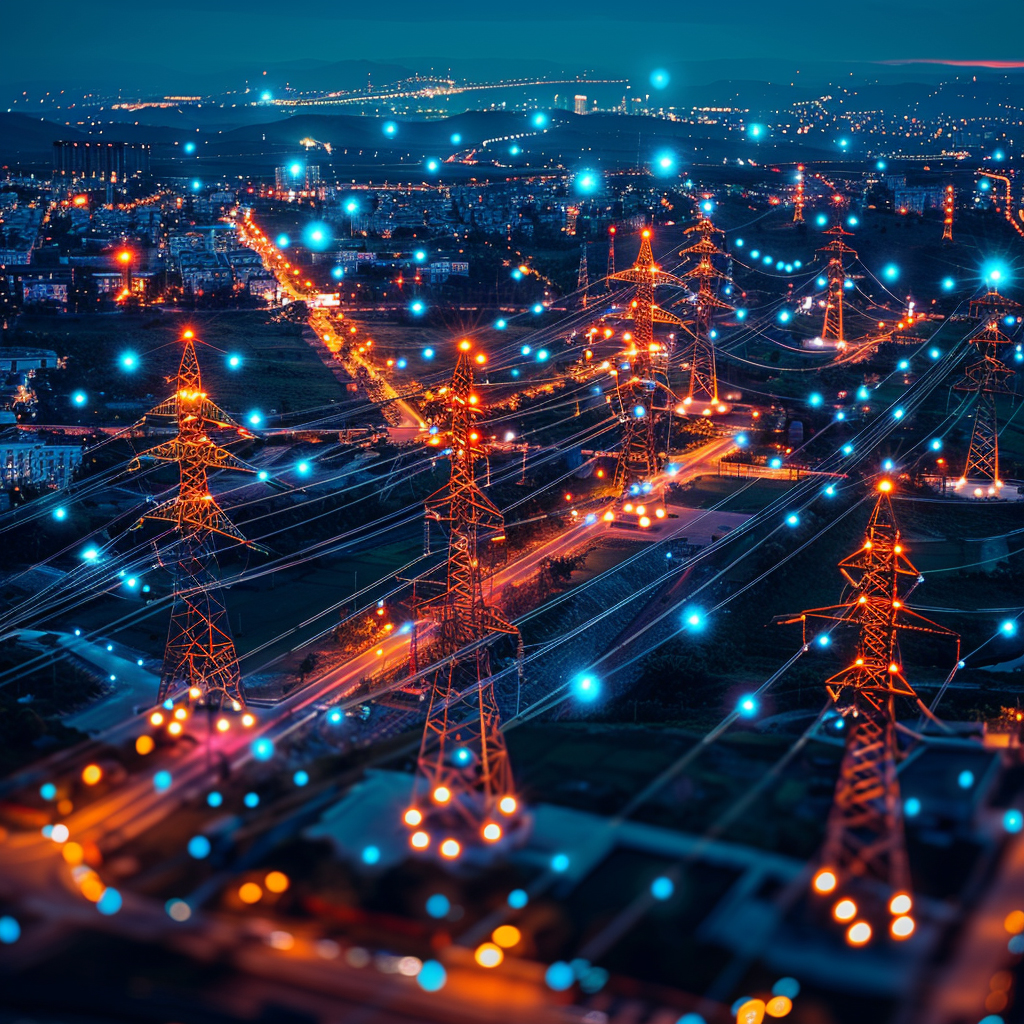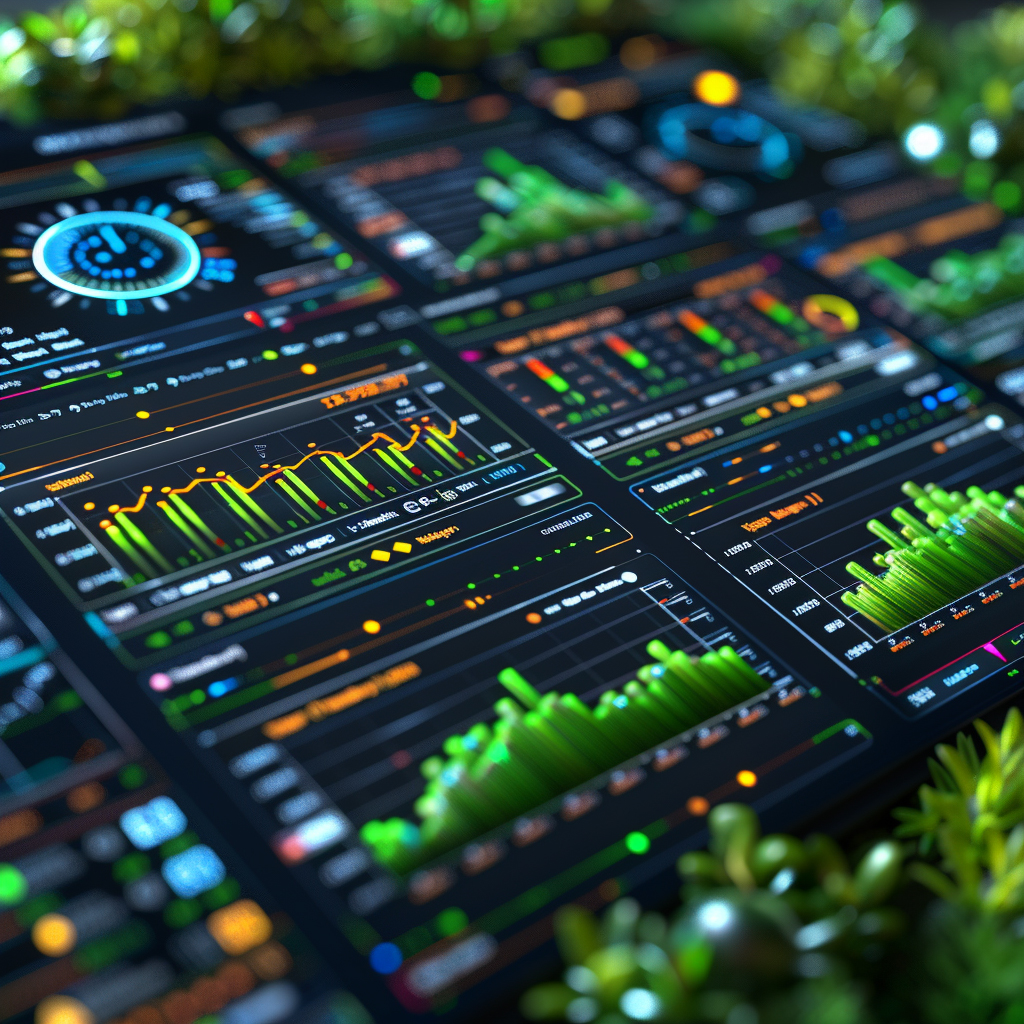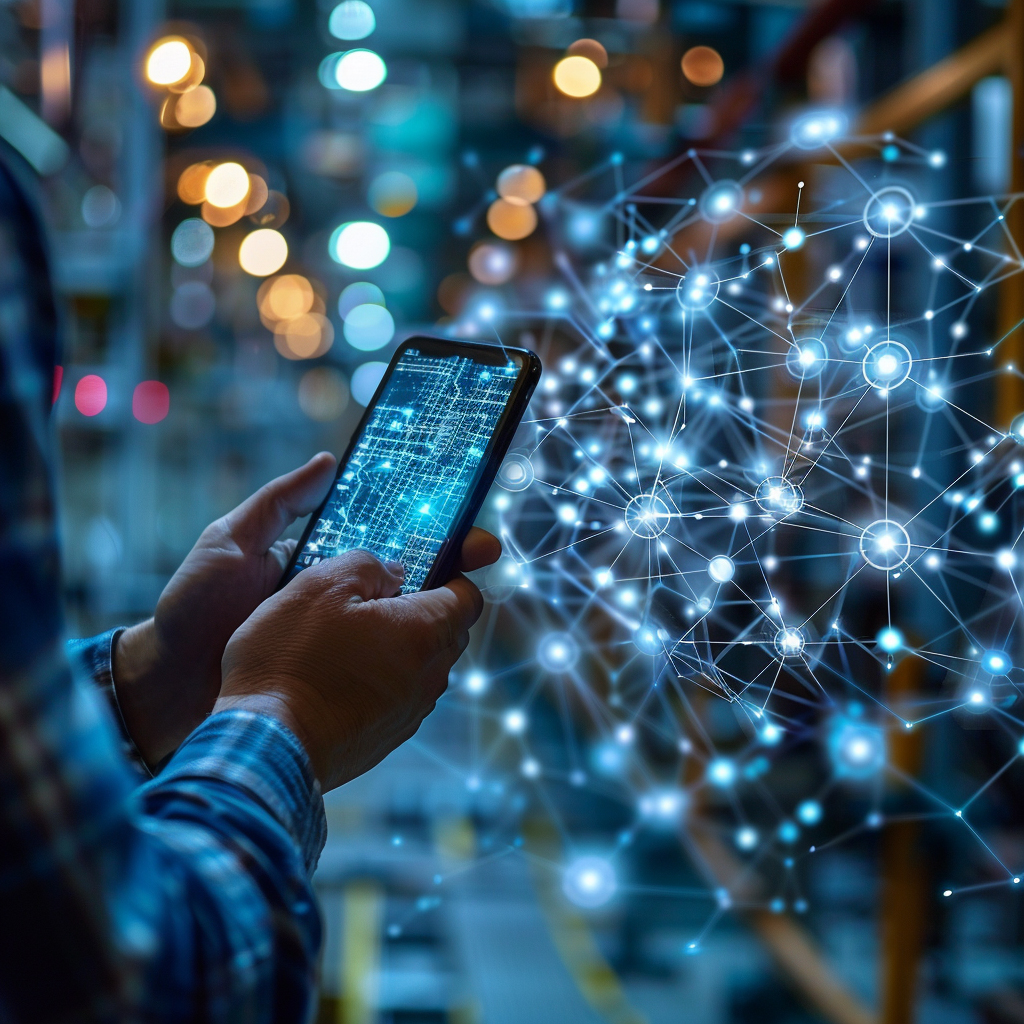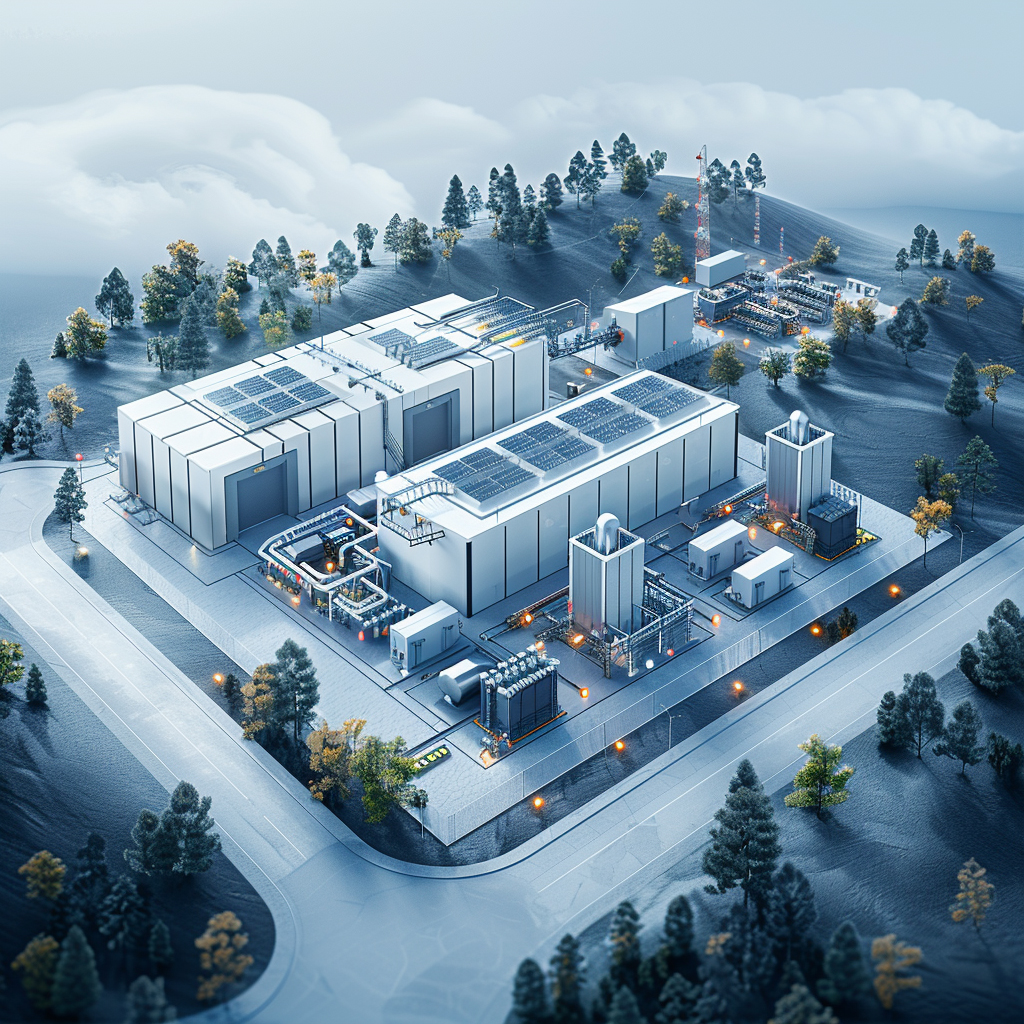1. Demand Forecasting
AI-driven demand forecasting uses machine learning to analyze vast datasets (historical usage, weather, economic factors) to predict electricity demand more accurately than traditional methods. Improved forecasts help grid operators balance generation with consumption in real time, preventing both shortages and excessive generation. In the U.S., the rise of variable loads like electric vehicles and data centers has made demand patterns more complex, increasing the value of AI-enhanced forecasting. Utilities leveraging AI can optimize unit commitment and purchasing decisions ahead of time, reducing operating costs. Overall, AI-based demand forecasting enhances grid efficiency and reliability by enabling proactive adjustments to power supply.

Modern AI load forecasting models can achieve roughly 90% prediction accuracy for short-term electricity demand, greatly improving utilities’ ability to match supply with demand. This high accuracy translates into better resource planning and cost savings for U.S. grid operators.
2. Grid Stability and Reliability
AI technologies bolster grid stability by continuously monitoring electrical parameters and identifying anomalies faster than human operators. Machine learning algorithms analyze data from sensors (phasor measurement units, smart meters, etc.) to detect voltage fluctuations, frequency deviations, or equipment failures in real time. By automating control responses (such as re-routing power or balancing load), AI helps prevent minor disturbances from cascading into outages. In the U.S., where power disturbances can be costly and frequent due to weather and aging infrastructure, AI offers a proactive approach to maintaining reliability. AI-based grid management systems can improve the resilience of the power network against both unexpected equipment failures and the variability introduced by renewable energy sources.

Power outages and disturbances impose a significant economic burden in the United States – estimated at around $150 billion in costs each year. By enabling predictive monitoring and rapid response, AI can help reduce the frequency and duration of such costly outages, thereby improving overall grid reliability.
3. Renewable Energy Integration
AI plays a critical role in integrating renewable energy into the grid by managing the variability of resources like solar and wind. Machine learning models forecast renewable power output (e.g. predicting solar generation based on weather forecasts) and help schedule other resources to fill gaps. In real time, AI can adjust controllable generation or storage to compensate when a cloud passes over a solar farm or when wind speeds drop. These intelligent controls allow higher penetration of renewables on U.S. grids while maintaining stability. Additionally, AI optimizes the dispatch of distributed energy resources and inverter settings to support voltage and frequency, addressing the technical challenges that arise from replacing conventional power plants with intermittent renewable sources. The result is a smoother incorporation of clean energy, reducing curtailment and ensuring reliable service even as renewable contributions grow.

In 2023, clean energy sources (including wind, solar, hydro, and nuclear) provided about 41% of U.S. electricity generation, and the national power system maintained high reliability throughout the year despite the large share of variable renewables. This demonstrates that, with advanced tools and strategies (including AI-driven forecasting and control), a grid can operate reliably even with a substantial portion of energy coming from intermittent renewable sources.
4. Predictive Maintenance
AI-based predictive maintenance in smart grids involves analyzing data from equipment sensors (transformers, breakers, generators, etc.) to predict failures before they happen. Machine learning models learn the normal operating signatures of grid components and can flag subtle deviations (vibrations, temperature, electrical readings) that precede a malfunction. In the U.S., utilities are deploying these AI systems to continuously assess the health of critical infrastructure, scheduling maintenance or component replacements during convenient windows rather than reacting to unexpected breakdowns. This approach extends the lifespan of assets and significantly reduces unplanned outages. By avoiding catastrophic equipment failures (such as transformer blowouts or generator trips), AI-driven predictive maintenance improves reliability and reduces maintenance costs. It also enhances safety for grid workers and the public by addressing issues proactively.

A major utility in the southern United States deployed over 400 AI models across 67 power generation units for predictive maintenance, which reduced forced outages and saved about $60 million per year in avoided downtime and repair costs. This real-world result illustrates the substantial economic and reliability benefits of AI-driven maintenance programs.
5. Energy Efficiency Optimization
AI optimizes energy efficiency in smart grids by fine-tuning the generation, distribution, and consumption of electricity in real time. On the grid side, AI algorithms can perform advanced control of voltage and reactive power (volt-VAR optimization) to reduce line losses and prevent over-delivery of power. They also analyze usage patterns to adjust the operation of devices like capacitor banks and transformers for peak efficiency. On the demand side, AI systems can manage building HVAC, lighting, and industrial processes to use energy at optimal times and minimize waste. U.S. utilities and grid operators are increasingly using AI to identify inefficiencies – for example, detecting an area with consistently low power factor or a feeder with unusually high losses – and correct them automatically. By coordinating thousands of variables that affect efficiency, AI helps wring more useful work out of each unit of electricity generated, cutting costs for utilities and consumers and reducing emissions.

The U.S. Department of Energy projects that full implementation of AI-enabled smart grid technologies could increase overall grid efficiency by up to 40% by 2040, through measures such as real-time optimization of power flows and loss reduction. Such gains would substantially lower energy waste and operating costs across the U.S. electric grid.
6. Peak Load Management
AI helps manage peak load by predicting periods of high electricity demand and automating strategies to mitigate stress on the grid. Machine learning models can forecast daily and seasonal peak demand spikes (for example, anticipating extreme air conditioning load during a heat wave) with high accuracy. In response, AI-driven control systems may trigger demand response actions – such as precooling buildings, temporarily cycling off commercial HVAC systems, or smart-charging electric vehicles during off-peak hours – to flatten the peak. AI can also optimally dispatch energy storage or fast-ramping generators just before a peak occurs, shaving the top off the demand curve. In the U.S., where summer and winter peaks put strain on aging infrastructure, these AI-coordinated efforts reduce the need for peaking power plants and help avoid overload-related outages. By efficiently smoothing demand, AI-enabled peak management maintains grid stability and reduces costly capacity requirements.

The importance of peak management was underscored in August 2023, when Texas’s ERCOT grid hit a record demand of 85,464 MW during a heat wave. That summer, ERCOT saw 10 new all-time peak records. AI systems that forecast such peaks and implement automated load-shedding or storage discharge can help prevent emergencies and keep the lights on during these extreme demand events.
7. Real-Time Pricing
Real-time pricing is an approach where electricity rates fluctuate based on supply and demand conditions, and AI is pivotal in its implementation. AI algorithms process vast amounts of grid data (generation availability, wholesale market prices, demand forecasts) to compute prices that change hourly or sub-hourly. By sending price signals to consumers (through smart thermostats, apps, or home energy management systems), the grid can incentivize users to shift usage to off-peak times – for instance, running appliances at midday when solar power is abundant or at night when demand is low. This dynamic pricing leads to a more balanced load curve, reducing strain during peak periods and cutting operational costs. In the U.S., some utilities have introduced voluntary real-time pricing programs for residential and commercial customers, yielding both bill savings for participants and operational benefits for the grid. AI is also used on the consumer side, where smart devices can autonomously respond to price signals (e.g. delaying a water heater cycle) to save money.

Illinois has been a pioneer in real-time pricing. In 2023, Commonwealth Edison’s residential hourly pricing program (which uses hourly market-based rates) saved its ~40,000 participants a total of $12.4 million on electricity bills, with the average participant saving about 44% on the supply portion of their bill compared to the standard fixed rate. These significant savings illustrate how AI-facilitated real-time pricing can financially benefit consumers while encouraging load shifting for grid benefit.
8. Cybersecurity
As the U.S. electric grid becomes smarter and more connected, it also faces growing cybersecurity threats – a domain where AI is increasingly being utilized for defense. AI-driven security systems monitor grid IT and OT (operational technology) networks, learning normal patterns of data traffic and grid device behavior. By doing so, they can quickly identify anomalies that may indicate a cyber intrusion or malware, such as unusual communication bursts from a substation controller or subtle changes in circuit breaker operation commands. Upon detecting a threat, AI systems can alert human operators or even initiate automated containment actions (like isolating affected network segments) much faster than manual methods. This rapid detection and response is crucial given that U.S. utilities are experiencing a surge in cyber attacks targeting critical infrastructure. AI can also help predict potential vulnerabilities by analyzing system configurations and past attack data, enabling utilities to patch weaknesses before they are exploited. Ensuring cybersecurity of the grid is an essential aspect of reliability, and AI tools are becoming a “force multiplier” for grid cybersecurity teams.

Cyberattacks on U.S. utility companies have escalated sharply. Through August 2024, U.S. electric utilities faced nearly 70% more cyberattacks than in the same period a year earlier. This surge in attacks highlights the urgent need for advanced AI-based monitoring systems to protect grid infrastructure, as traditional cybersecurity measures are being tested by the rising volume and sophistication of threats.
9. Energy Storage Optimization
AI is essential for optimizing the operation of energy storage systems (like large battery banks) within the smart grid. These systems charge and discharge in response to grid needs – storing excess energy when supply exceeds demand (for instance, midday solar surplus) and releasing energy during peak demand or when renewables output dips. AI algorithms improve this process by forecasting both short-term and long-term supply-demand conditions and determining the optimal charge/discharge schedule to maximize value. In practice, AI can extend battery life by preventing unnecessary cycling, reduce costs by charging when electricity is cheapest and discharging when it’s most needed, and enhance reliability by providing fast frequency response or backup power precisely when required. In the U.S., where battery storage deployment is expanding rapidly, AI ensures these expensive assets are used efficiently – for example, preventing overcharging or overheating, and coordinating multiple storage sites as a virtual power plant. By dynamically managing storage, AI helps to flatten net load curves and absorb renewable variability, making the grid more flexible and resilient.

California’s grid, which has seen a massive growth in battery storage, provided a dramatic example in April 2024 – for the first time ever, battery storage output in California exceeded 6,000 MW, briefly making batteries the single largest source of electricity on the state’s grid at that moment. AI software orchestrated the charging and discharging of these batteries, illustrating how intelligent control of storage can supply significant power during critical periods (such as evenings when solar production falls off), thereby maintaining stability and meeting peak demand.
10. Customer Engagement and Interaction
AI is transforming how customers interact with the electricity grid by enabling personalized energy management and feedback. Smart meters and IoT devices in homes and businesses generate detailed data on energy usage patterns. AI systems analyze this data to provide tailored insights – for example, smartphone apps can show a homeowner their usage broken down by appliance and suggest specific actions (like adjusting thermostat schedules or replacing an old refrigerator) to save energy and money. Some U.S. utilities use AI-powered chatbots or virtual assistants to help customers with billing questions, outage reporting, or tips for efficiency, improving customer service responsiveness. AI can also drive gamified energy-saving programs that keep consumers engaged (such as challenges to use less energy than similar homes, with rewards). Moreover, AI is integral to demand response programs that encourage customer participation; for instance, smart thermostats with AI learn occupants’ comfort preferences and can automatically respond to utility signals by temporarily adjusting settings to reduce load. Through these tools, consumers become active participants in grid operations, which increases overall efficiency and can defer the need for new infrastructure. The outcome is a more interactive grid where customers are empowered with information and automation to control their energy usage in alignment with grid needs.

Advanced metering and analytics have paved the way for broad customer participation in grid programs. As of 2022, over 15 million U.S. homes and businesses were enrolled in time-varying or dynamic electricity pricing programs, leveraging data from smart meters to adjust usage based on price signals. This indicates a substantial number of consumers are directly engaging with and responding to grid conditions (often assisted by AI-driven tools), marking a shift toward a more interactive and flexible energy system.